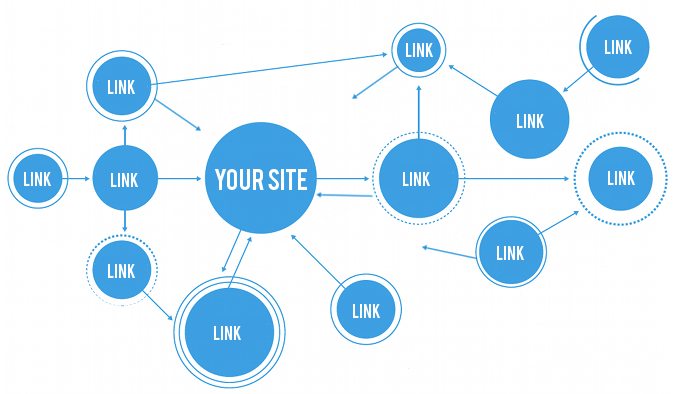Over the past two years, SEOMoz became Moz, ThunderSEO became ThunderActive, and seOverflow became Inflow. Although I do not work for these companies, I would argue that they — and likely many more — have been rebranding themselves by removing affiliations to “SEO” and instead associating themselves with good, old-fashioned “marketing.”
The reason? The phrase “SEO” has become tainted with an association with dubious efforts to rank highly in Google with “linkbuilding” and other tricks that increasingly — and thankfully — no longer work. Nutshell: In 2015 and beyond, so-called “SEOs” and other digital marketers will increasingly turn to the traditional practice of public relations because the best links are not something that websites “get” — the best links come naturally as a result of doing good marketing and publicity.
As in the past, the best results will come from the building of strong brands that deserve to rank highly in Google while also converting the increased traffic towards desired business and marketing goals. But in case you do not yet know the importance of links in digital marketing, I’ll explain the overall context first. (Others, feel free to skip to the following section!)
Why Links Are Important
Moz’s Introduction to SEO publication describes the Internet in this manner:
Imagine the World Wide Web as a network of stops in a big city subway system.
Each stop is its own unique document (usually a web page, but sometimes a PDF, JPG or other file). The search engines need a way to “crawl” the entire city and find all the stops along the way, so they use the best path available – links.
I’ll extend the metaphor further. If subway stop A has more connections with other stops than subway stop B, then A is more important than B. Look at subway map of Boston (where I was a journalist and newspaper editor for years in my first career):
Park Street in the middle is more important than Quincy Adams all the way at the southeastern end of the Red Line. In the same way, a website that has a lot of “connections” from other websites — in the form of links — are viewed by Google as more important websites.
Of course, websites today can connect to each other — and to people themselves — through other methods than links. One obvious example is social media. But links are still a fundamental part of Google’s algorithm as far as ranking websites because links were how Google originally saw websites connecting to each other years ago.
Why Artificial Links Died
Once marketers figured out that links could originally propel websites higher in search results, the race was on to get more and more links by any means necessary. It did not matter the links were on websites that were actually read by a company’s target audience. It did not matter if anyone visited the website. A link was a link. My first job in SEO years ago — I later realized I had been doing so-called “black-hat SEO” — was writing keyword-stuffed articles for a random website that contained links to the company’s website. The company actually owned that website but employed dubious tactics to prevent Google from realizing it.
Here are just a few of the linkbuilding tactics that were used (but no longer work):
- Link pyramids or link wheels
- Link exchanges, directory links, and forums
- Buying links, excessive footer and sidebar links, blog networks, and comment spam
- Article directories and bad guest posts
- “SEO” press releases
Here is the simple reason why: Google does not want to give you “credit” for a link that you gave yourself. (The best links are those that others give you without any direct influence on your part!) Google’s Penguin Update — first released in 2012 but constantly updated — essentially aims to do exactly that — weed out any and all artificial links. It’s the reason that we see websites with, say, 100 good links ranking higher for a given search query than those with, say, 1,000 bad ones.
Earning Links With Publicity
Let’s do a thought experiment. Say that I used public relations — through this example is actually media relations, a subset of PR — to get a New York Times reporter to do a story about a client in the automotive industry that contains a natural link to the client. Then, a bunch of automotive bloggers see the article and write their own blog posts in response — all of which also link to the client naturally. It snowballs from there.
These are the best types of links to get because they are 99% natural — and the mentions of the client in known publications increase its brand in Google’s eyes, and the resulting website visitors will be more likely to buy because they are all people who are interested in automotive topics. It’s all just doing good marketing.
For more of my strategic thoughts on this topic, I invite you to see my other writings:
- An Introduction to PR Strategy for SEOs (my essay at Moz)
- How to Integrate PR into SEO Strategy (my webinar at Moz)
- The Coming Integration of PR and SEO (another essay of mine at Moz)
- How to Use Public Relations to Build Links (my presentation at SMX Milan 2013)
- PR Strategies for Digital Marketers (my presentation at SMX West 2014)
- The Future of SEO in 2015 (and beyond)
- How to Pitch Reporters in Various Industries
- SEO Doesn’t Exist: The Future of Digital Strategy
- Why Public Relations is the New SEO Strategy You Need
- Google is Helping Online PR and SEO, Not Hurting It
Google’s Brand Bias
Here is one example. Google’s purportedly has a bias towards big brands in organic search. (You see extensive discussion of this topic at Search Engine Land, SEO Book, Moz, and Portent.) But it’s not for the reason that many people think.
Google’s algorithm probably does not contain a rule like this: “If [query] contains [hamburgers], rank mcdonalds.com first.” The reason that brands rank highly is simply because they have marketing, advertising, and public relations departments that work 24/7 to generate publicity and online discussions about the brand — all of which generate millions of brand mentions and links that are completely natural. I highly doubt that McDonald’s has a team of “SEOs” that sit and submit links to directories and article websites all day long.
Links and high search-engine rankings are just the by-products of doing good marketing, advertising, and PR to build a brand. If I ran a marketing department, I would close the linkbuilding operations and redirect those assets towards marketing, advertising, and PR.
What It All Means
Build, promote, and publicize a website that delights its target audience. Everything else will fall into place. As I have written, this is the key to good “SEO” — in 2015 and every year thereafter.

